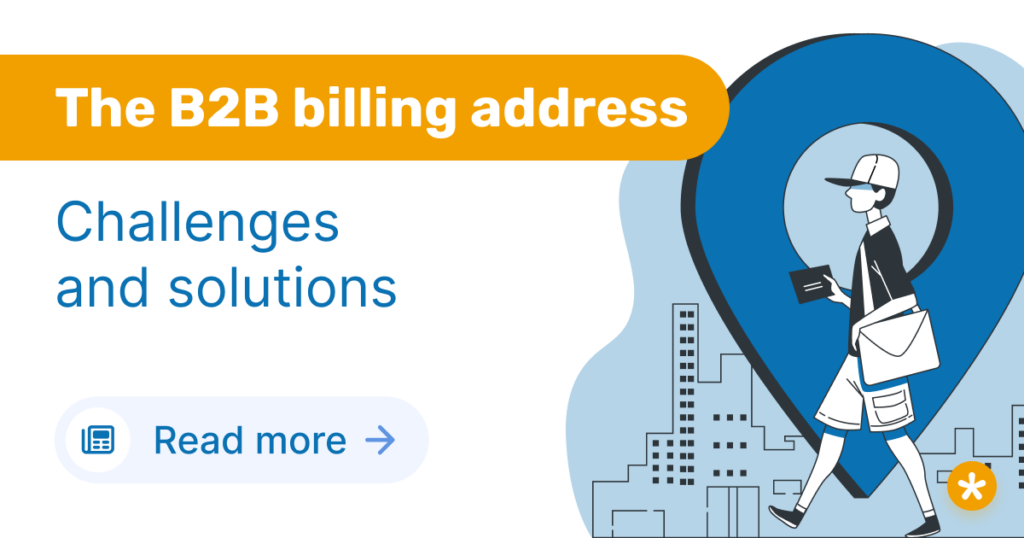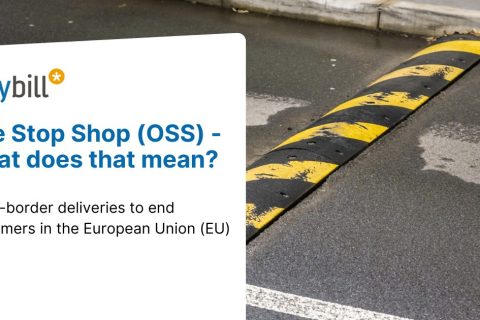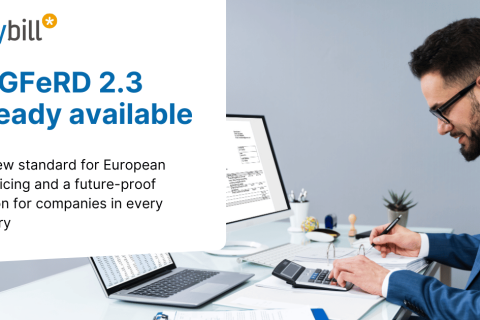
Issuing an invoice without providing a (correct) invoice address is a fundamental violation of the requirements for a tax-compliant invoice. In our guide The 10 components and mandatory details of an invoice, we provide information on all the relevant details that should always be listed on an invoice. However, the invoice address also brings with it many other challenges, but these are no less important than issuing a tax-compliant invoice. Today we present the most common challenges for the billing address in B2B.
Table of contents
The challenges of the billing address in B2B
The invoice address is the introduction to your document and usually the first eye-catcher. But even before the recipient of the document, your customer, gets to see it, the first challenge arises: to whom exactly should the invoice be sent?
Ambiguity in identifying the correct billing address
Especially if your customer is a large company, it happens that the ordering department is not at the same time the invoice recipient. To which department or to which responsible person should the invoice be written? Alternatively, a company could have moved in the meantime, from the start of the order to the billing date, so that the address you have is no longer current. Perhaps a decisive detail is missing from the invoice address you have, so that the invoice only arrives at the actual recipient via detours, but this leads to a delay in payment.
Incorrect or missing billing addresses
Incorrect or even completely missing billing addresses definitely mean a delay in the settlement of your claim. In the worst case, an incorrect address means that the document cannot even be delivered to the recipient. After a few days, the document may arrive back at your premises. Then the dispatch process and, of course, the search for the correct address starts all over again. For the company, this means foregoing liquidity.
In addition, it is very unpleasant and creates a dubious impression if the address arrives at the customer with typing errors, with the name of an incorrect contact person or other information. This should be avoided at all costs.
With regard to late payment, it should also be noted that if an invoice is overdue, a subsequent dunning process cannot be carried out correctly either. The actual recipient does not even have knowledge of the invoice document until then, because he never received the invoice.
Management of different billing addresses for different customers
Your customer does not have only one billing address? Here, too, you should agree in advance to which address the invoice should be issued. If the customer’s company has several locations, for example, it should be determined in advance to whom the invoice will be issued. Complex internal processes, which may also be at the expense of the customer because he has to pass the document on internally, should be avoided at all costs.
Difficulties in tracking invoices
If it did happen that the invoice was sent to the wrong address, the recipient would not even be aware that the invoice existed. This means that subsequent processes, such as reminders, dunning letters or even collection documents would also be issued to the same wrong address. This not only creates a workload, but also a monetary expense that must be borne by one of the parties involved.
Is there any possibility of tracking at all? Or is the focus more on finding the reason for the misstatement? It should already be recorded in writing when the contract is concluded by both parties which addresses are important and up-to-date.
Billing address management solutions
Of course, all of the above challenges can also arise in the B2C sector, but end customers usually enter their address themselves. When ordering online, for example, he enters his address via a buyer profile he has created or simply in the shopping cart. He would use this if he actually needs an invoice. However, since in B2C the invoice is rather secondary on the customer’s side, it concerns more the accounting department of the selling company. The latter needs a flawless invoice for tax purposes. Above all, in order to be able to claim an input tax deduction.
The following solutions make it easier for you to handle correct billing addresses for your customers:
- Define clear processes and standards for identifying the correct billing address
- Manage billing addresses in a central system such as easybill or in a CRM (Customer Relationship Management System) that is suitable for you
- Verify and update your customers’ billing addresses on a regular basis
- Use confirmations and verifications to ensure that invoices are sent to the correct address
- Automate processes for maintaining billing addresses
Billing address in B2B – administration in easybill
The solution paths mentioned can of course be implemented accordingly in easybill. A large focus is on the automation of processes. Via interfaces to many CRM solutions or your own tools, you can synchronize customer data and keep it up to date at all times. On our partner page, or integration solutions page, we offer an overview of the most important integrations that easybill currently supports. It is our special concern to extend these integrations step by step and to use synergy effects. Feel free to take a direct look at which integration also fits your internal processes and further simplifies your daily work with easybill.
Are you curious? Then register now and create your easybill account in just a few steps.
Read also:
Payment management: direct debits via finAPI
Do you already know the optimized action search in easybill?
Why the partial invoice is still so important in the craftsman sector




